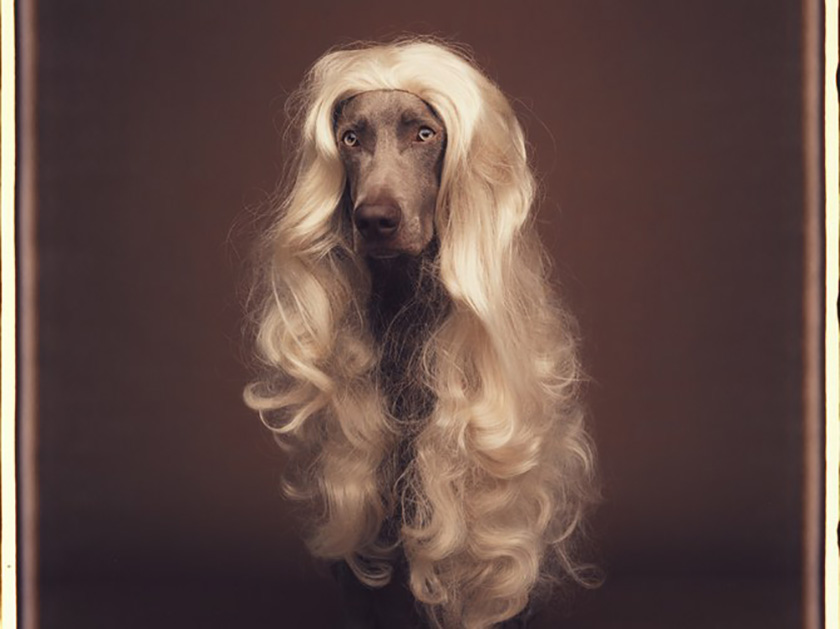
William Wegman, Blonde on Browne, 1991. Image courtesy of Architectural Digest.
William Wegman has been taking photographs of his beloved Weimaraners long before the advent of Instagram. It began in the 1970’s when Wegman first began photographing his first Weimaraner muse, Man Ray (named after the Dada artist), with his Polaroid camera after dressing and posing Man Ray as a human.
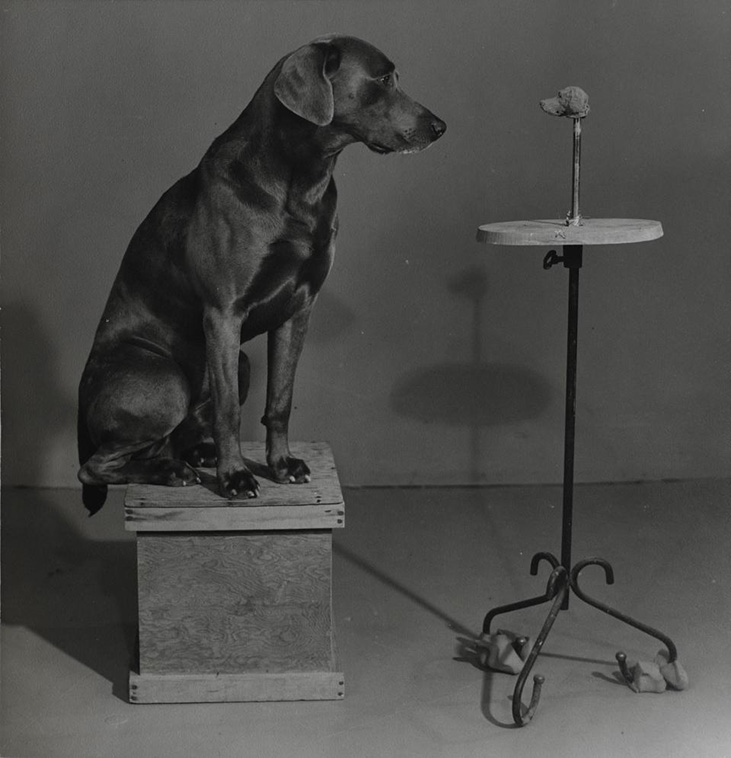
William Wegman, Man Ray Contemplating the Bust of Man Ray, 1978. Image courtesy of Forbes.
Now 30 years after it all began, Sperone Westwater will host William Wegman Dressed and Undressed, a show of 20 X 24 Polaroids exhibited for the first time in the artist’s sixth solo exhibition.
This special two-floor exhibit at Sperone Westwater will focus on Wegman’s use of the Polaroid camera to “explore the nature of transformation and illusion, and with the help of his Weimaraner muses, to upend expectations of what it means to be human.”
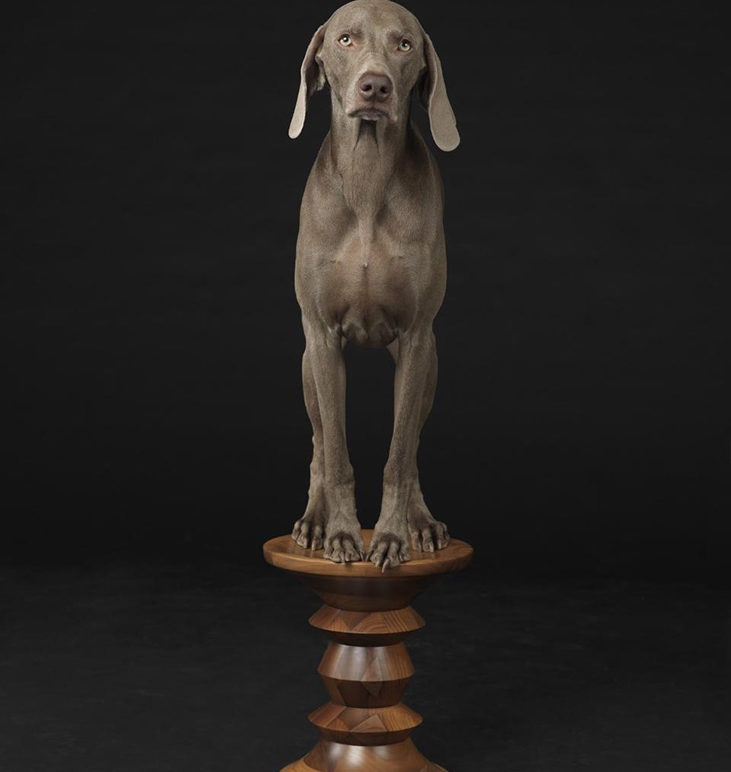
William Wegman, Figured Base, 2015. Image courtesy of Forbes.
Wegman was initially attracted to Polaroid camera because it was impossible to change or edit a Polaroid image. During a time when photographs were developed through a series of processes the immediacy of the Polaroid was extremely gratifying.
With Polaroid images, what see you is what you get – you cannot edit or change a Polaroid image. Previously Wegman worked in black and white photography, however, the jewel tones of Polaroid film led to wild experimentation.

William Wegman, Léger, 1998. Here Wegman experiments with photographs that mimic modern art. Image courtesy of The New York Times.
Wegman began placing the dogs on pedestals to elevate them and make them appear taller, which then led to dressing them up in human clothing and props.
In his famous photographs, the object that elevates the dog is sometimes a bicycle, stool, a human’s lap, or even roller skates!
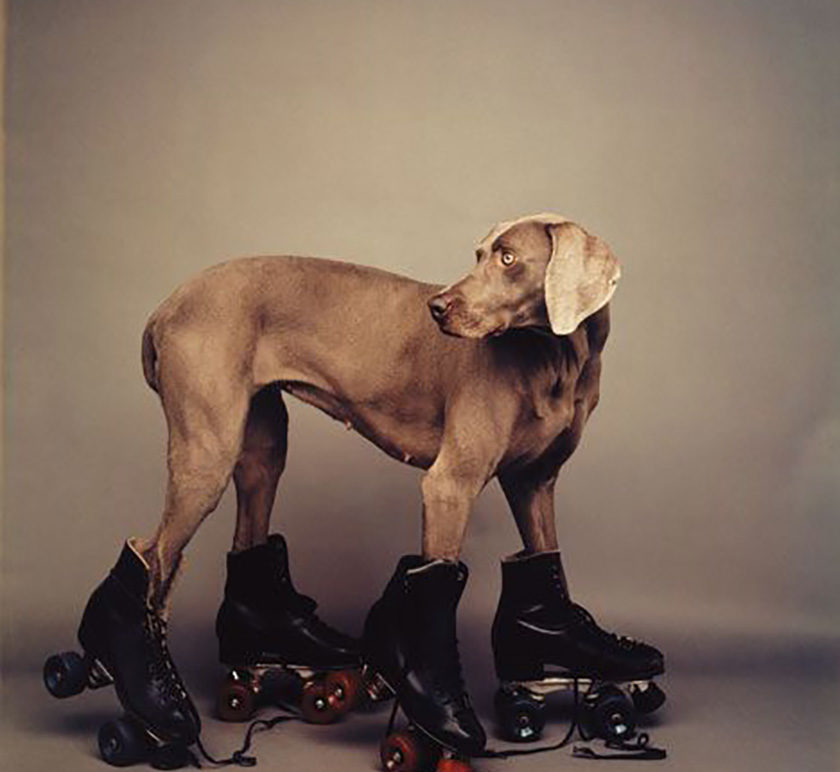
William Wegman, Roller Rover, 1986. Image courtesy of Smithsonian Magazine.
As Wegman described to Architectural Digest, the setup involved felt much like a movie set with a generator, lighting equipment, drying racks, and a horde of costumes of props.
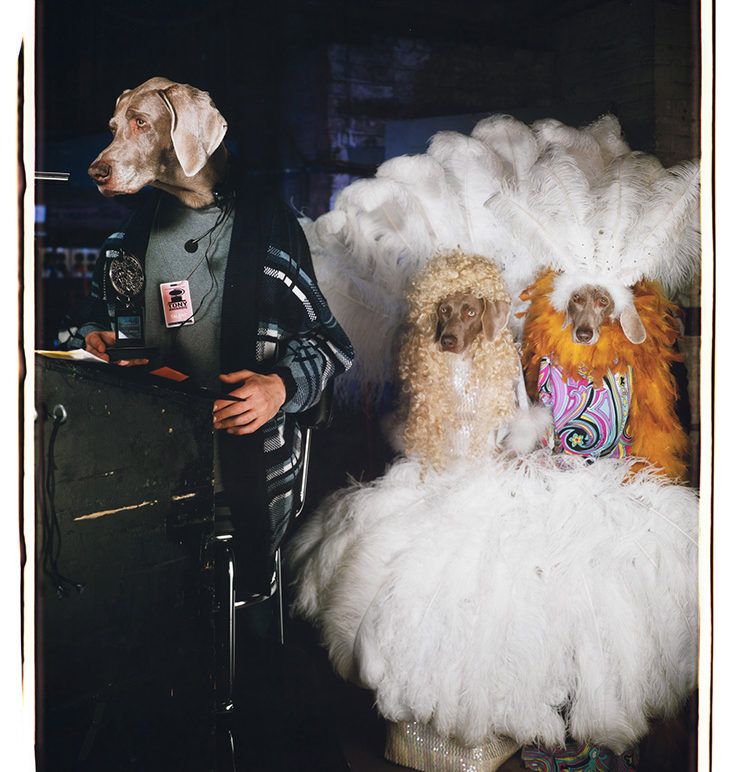
William Wegman, Lighting Director, 2002. Image courtesy of The New York Times.
While the Polaroid camera admittedly did not produce the highest quality images, the instantaneous nature did produce exciting results. Wegman began noticing, and carefully crafting, the moments that focused on subtle characteristics of the animals themselves.
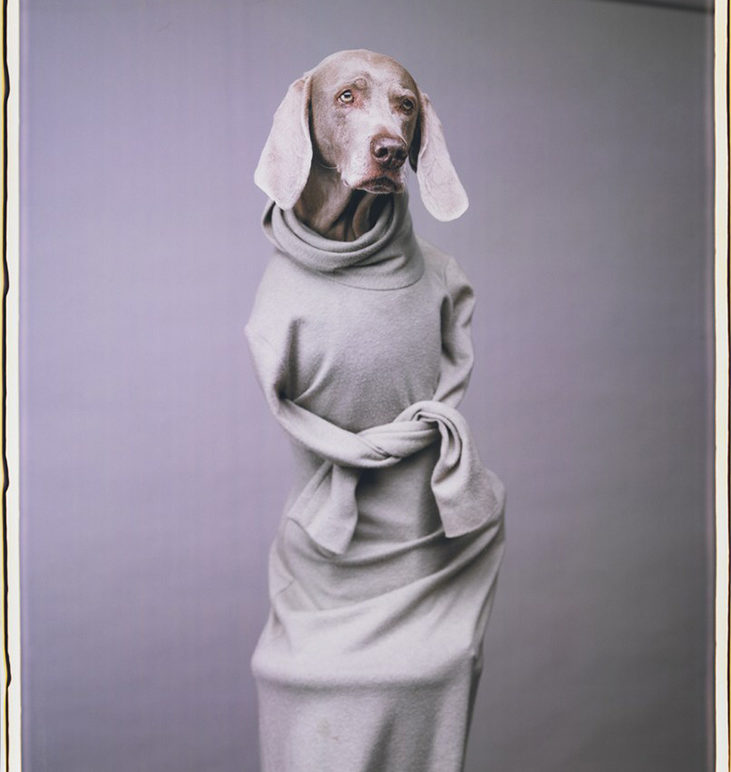
William Wegman, Twisted Hope, 2001. Image courtesy of Architectural Digest.
Perhaps a knowing expression, a clever tilt of the head, or a very relaxed recline in a lounge chair, all expressing participation in Wegman’s work.
Man Ray depicted solidly depicted the “Every Man” while photographed doing mundane human activities.
Fay Ray, a showoff according to Wegman, invited the more challenging photographs. As Wegman explained to Architectural Digest, Fay “would get visibly excited when she could sense that Wegman was pleased with her work.”
Batty, Fay’s daughter, however, would practically fall asleep on set. Perhaps Batty could sense she was in good hands and the photos of her lounging in chairs would be entertaining despite any visible enthusiasm she outwardly displayed.
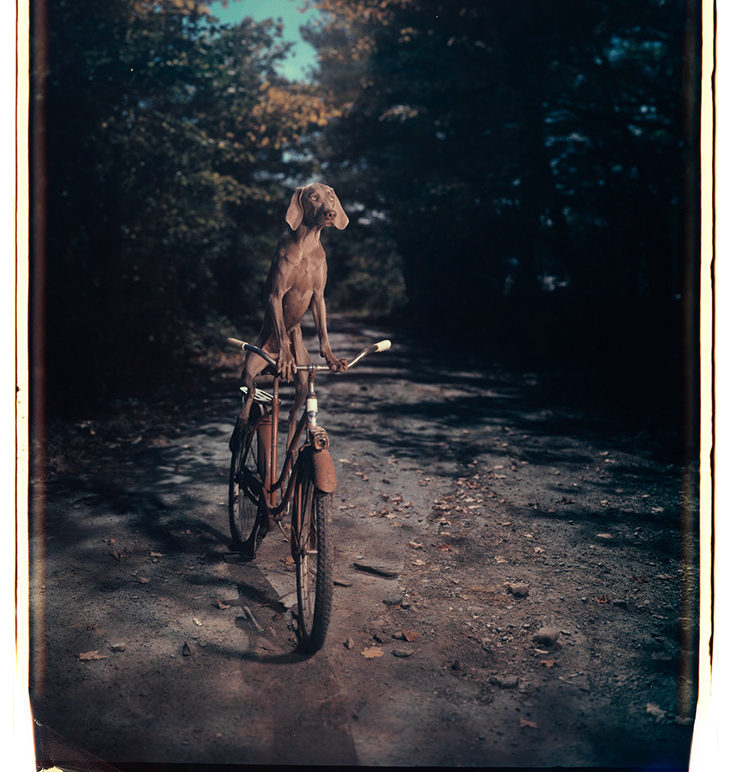
William Wegman, Uphill, 1990. Image courtesy of The New York Times.
The spontaneity of the Polaroid film freed Wegman from feeling completely responsible for the final product.
While he certainly crafted the set and placed his dogs in costumes, the dogs’ expressions are entirely independent of Wegman’s influence. The instant Polaroid film freed Wegman from sketching his sets and compositions in advance.
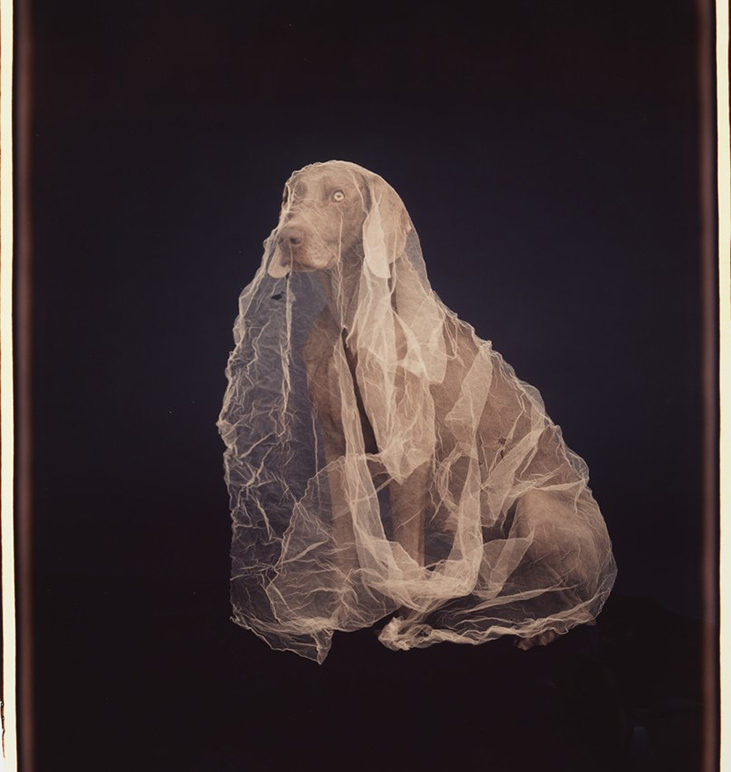
William Wegman, Spirit of Chiffon, 1989. Image courtesy of Architectural Digest.
What Wegman finds most special about Dressed and Undressed exhibit at Sperone Westwater was the rediscovery of Polaroids taken ages ago. The Polaroids in this exhibit have never been exhibited before and were only recently unearthed during the process of Wegman digitizing his archives.
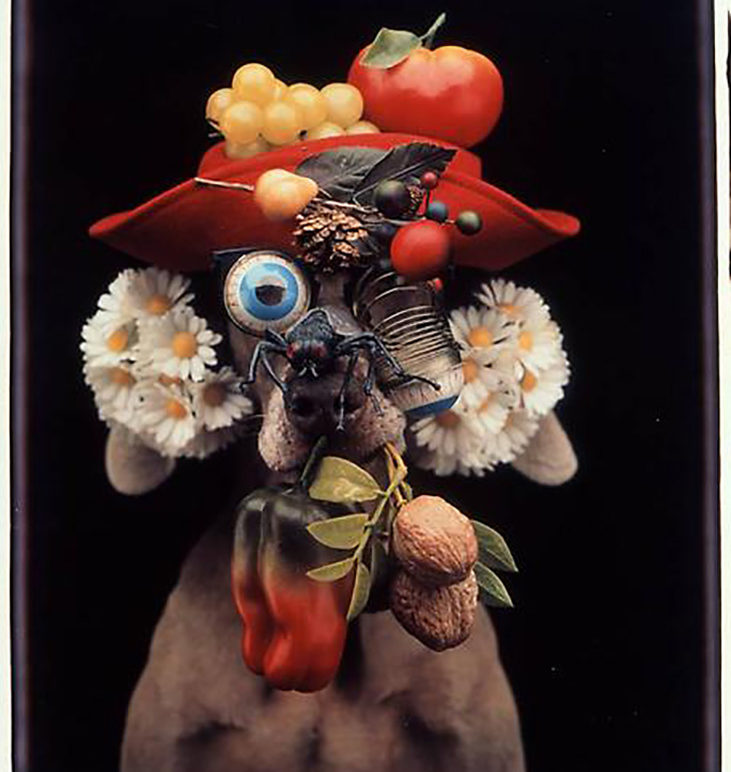
William Wegman, Harvest, 1994. Image courtesy of Sperone Westwater.
Spanning from 1979 to 2007, the Polaroids were stored in an archival box and mostly forgotten.
As Wegman writes in his upcoming book Being Human, going backwards in time he was able to see all of his passed Weimaraners growing younger and younger all the way to images of Man Ray where the magic started.
Wegman is one of the most praised anthropomorphic artists of our time and the significant Sperone Westwater exhibit of these never seen photographs is not to be missed!
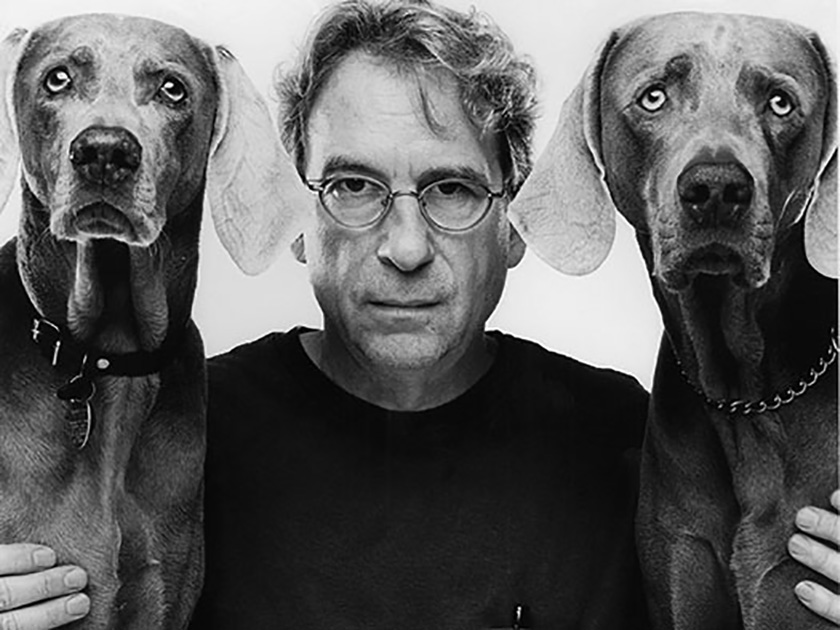
Wegman and a pair of his adored Weimaraners. Image courtesy of Sperone Westwater.
Exhibition Details:
William Wegman
Dressed and Undressed
Tuesday, September 5th, through Saturday, October 28th
Sperone Westwater
257 Bowery, New York, New York 10002